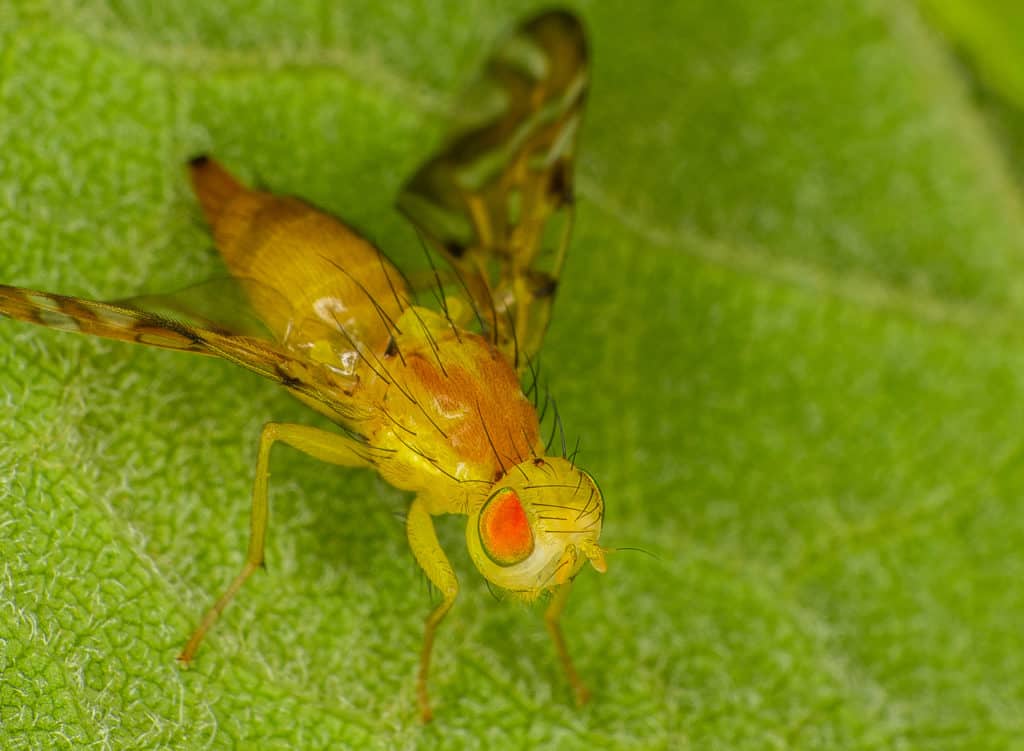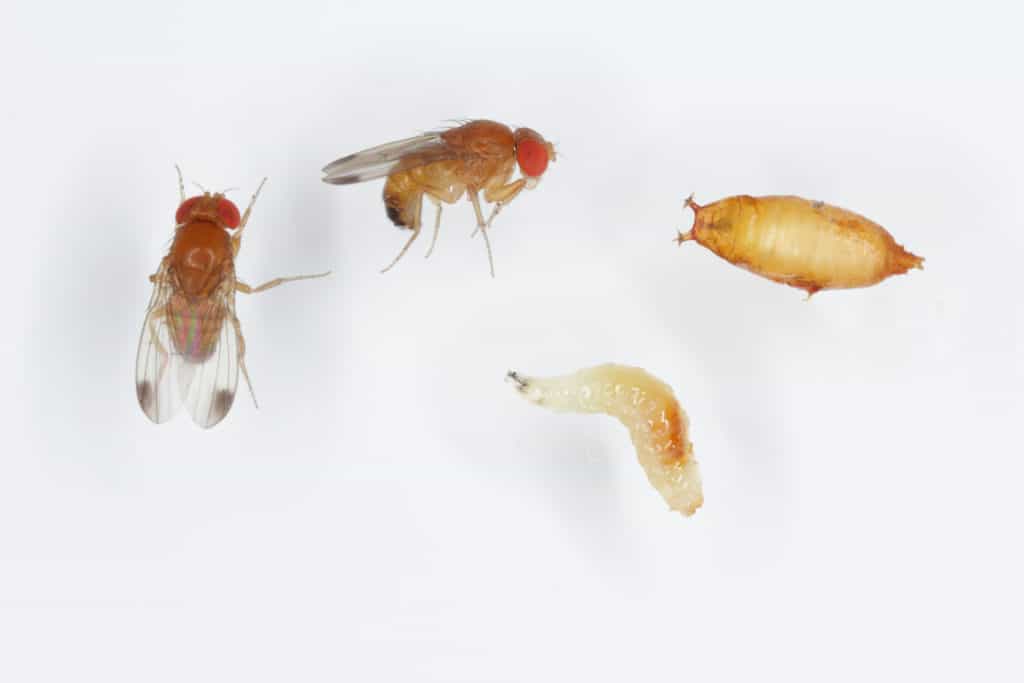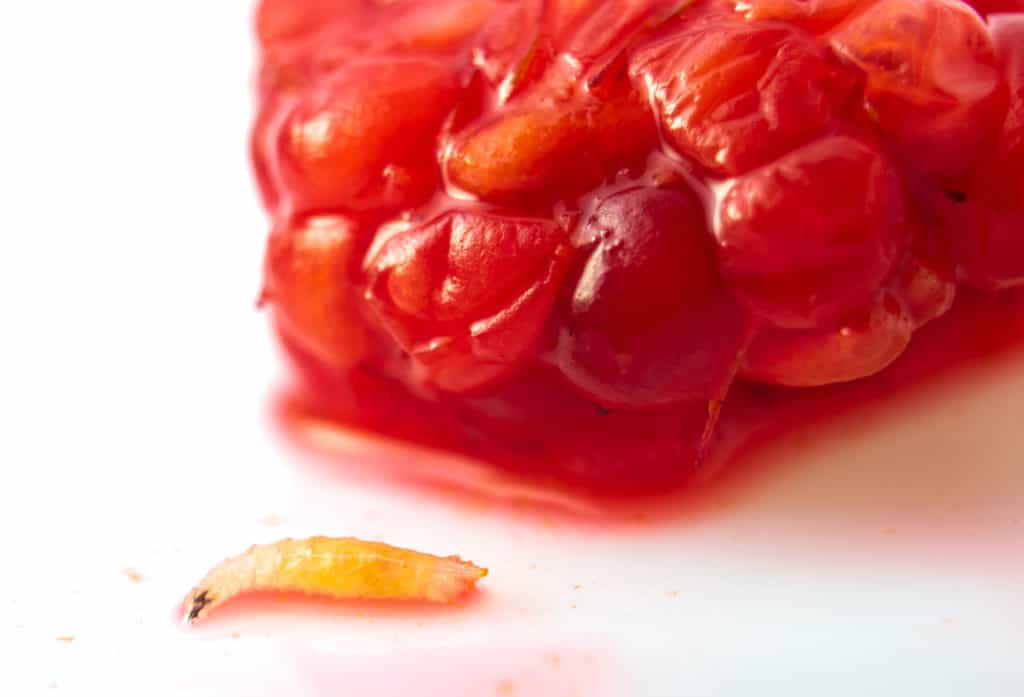Invasive Fruit Flies
Invasive Fruit Flies
Spotted Wing Drosophila
Native to Asia, the spotted wing drosophila (Drosophila suzukii) is a very tiny species of fruit fly. Due to its very miniscule size, these flies are extremely difficult to detect and, as such, when they were discovered in Hawaii in 1980, it was quickly surmised that they had most likely been there far before their discovery. Since the 1980’s they have also been found in both South America and Europe, making them an international invasive species with global range.
With so many changing environments however, it is a bit of a wonder as to how they have been able to survive in such vastly different ecological environments.

Amazing Adaptability
The key to the worldwide invasion success of these fruit flies is their amazing ability to adapt to different environments and situations. The spotted wing drosophila are able to exploit different habitats, assimilate into new ecological communities and, most significantly, have two levels of variability within their population.
Variability in populations of species is often thought to solely refer to a variance due to natural selection. This particular variation provides the offspring of the species in question with a greater percentage of genes that offer advantages in terms of both reproduction and overall survival. Over several generations the creatures will become significantly more suited to their respective environments. While this practically universal variance is true for the spotted wing drosophilas, their populations are also gifted with a secondary variation, which increases their adaptability within diverse environmental niches: phenotypic plasticity.
Phenotypes are a set of characteristics within an individual that are observable and result from their environment. When these characteristics are able to change within an individual’s lifetime it is known as phenotypic plasticity. This special ability allows spotted wing drosophilas to adjust to their new environmental niches in historically rapid time frames. In a series of studies conducted by doctors from Memorial University and Acadia University, it was discovered that these fruit flies can change the following traits:
- Adjusted wing size due to climate or diet
- Changes in their morphology
- Acclimatization to subtropical, temperate, or frigid climates
Catherine Little Ph.D., head of the study, concluded that, “D. suzukii biology, physiology, and behavior are dependent upon the regional climate, local environmental conditions and available feeding and oviposition resources.”

The Problem with the Invaders
Since their arrival in the continental United States, the spotted wing drosophila has caused roughly $500-700 million in damages per year. They are a menace to agriculture due to their reproductive practices. The females burrow holes into fruits such as blueberries, cherries, grapes, raspberries, and strawberries, and deposit their eggs inside to hatch into larvae. While this practice is far from foreign to flies, the spotted wing drosophila uniquely uses fresh, ripened fruit as opposed to rotting or overripe options. This can lead to a crop loss of over 80% in some cases and completely decimate home gardens.
Due to these fruit fly’s knack for agricultural destruction, intense research is currently being conducted on how to better identify this invasive species and to find the most effective control methods in order to stop their carnage.

Citations
Roche, J. (2020) High Adaptability Allows Invasive Fruit Fly to Thrive in New Environments, Entomology Today. The Entomological Society of America. Available at: https://entomologytoday.org/2020/06/09/high-adaptability-invasive-fruit-fly-new-environments-spotted-wing-drosophila-phenotypic-plasticity/ (Accessed: September 2020).
Spotted Wing Drosophila (SWD) (2019) Cornell University Fruit Resources: Resources for Commercial Growers. Cornell University. Available at: https://fruit.cornell.edu/spottedwing/ (Accessed: September 2020).
8 Creative Ways to Have a Pest-Free Fourth of July
8 Creative Ways to Have a Pest-Free Fourth of July 8 Creative Ways to Have a Pest-Free Fourth of July Summary: The Fourth [...]
A Simple Guide to Preventing Stinging Pests
A Simple Guide to Preventing Stinging Pests A Simple Guide to Preventing Stinging Pests Summary: Stinging insects are more active in warm weather, [...]
These 10 Natural Mosquito Repellents Can Actually Help
These 10 Natural Mosquito Repellents Can Actually Help These 10 Natural Mosquito Repellents Can Actually Help Summary: Natural mosquito repellents are easier to [...]
How to Get Rid of Carpet Beetles
How to Get Rid of Carpet Beetles How to Get Rid of Carpet Beetles Summary: Carpet beetles are sneaky pests that don’t usually [...]
How Do Roaches Affect Asthma and Allergies?
How Do Roaches Affect Asthma and Allergies? How Do Roaches Affect Asthma and Allergies? Summary: It’s no secret that pests impact human health, [...]
These 5 Carnivorous Pests Might Surprise You!
These 5 Carnivorous Pests Might Surprise You! These 5 Carnivorous Pests Might Surprise You! Summary: There are many eco-friendly ways to prevent pests, [...]

